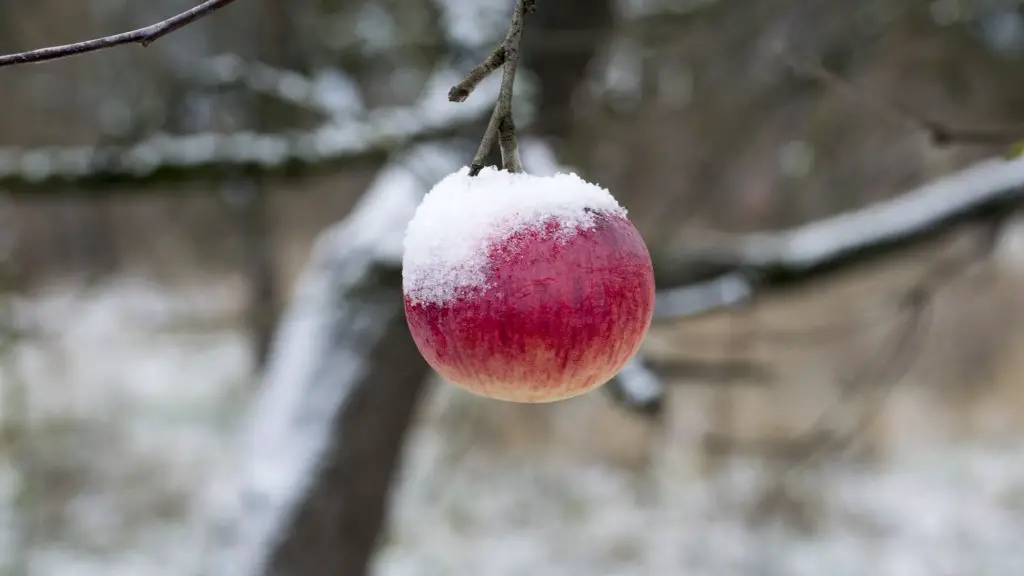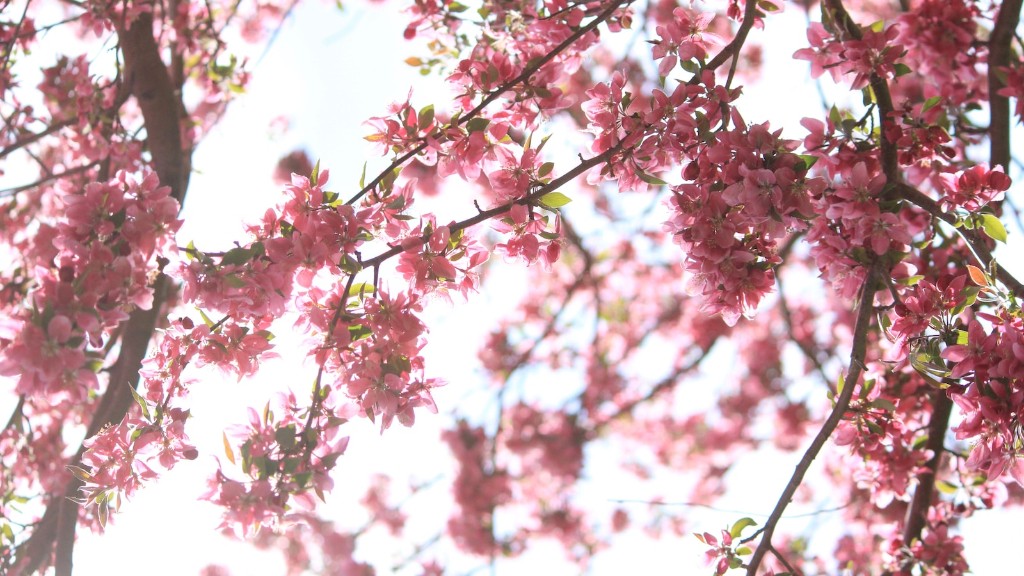Lemon trees are a beautiful, vibrant addition to almost any landscape, or houseplant. While these trees are generally easy to care for, knowing the best time to feed them is an important piece of the puzzle for keeping them looking their best. The best time to feed a lemon tree is dependent on the variety of tree, seasonal changes, and the age of the plant.
In order to get the most out of your lemon tree, you’ll need to carefully consider the growth cycle of your particular tree and then feed accordingly. Generally, you will want to feed your lemon tree every two to four weeks throughout the growing season. Different varieties of lemon trees will have differing requirements, so make sure you take those into account when making plans to fertilize your tree.
When feeding, it is important to use a fertilizer specifically formulated for citrus acid trees, as this will give your tree the balanced nutrition it needs to stay healthy and strong. When mixing the fertilizer with water and applying it to the base of the tree, just make sure you adhere to the directions on the packaging. Too much or too little fertilizer can potentially cause your lemon tree harm, or have an adverse effect on the quality of its fruit.
Many experts recommend avoiding fertilizing in late winter or early spring, as this is when the tree should be getting ready for its main growth period. If you fertilize too soon in this season, it may cause the tree distress and delay its blooming and fruit production cycles. Similarly, it is best to avoid feeding a lemon tree in late autumn and throughout winter, as, once again, this carries the risk of promoting too much growth and sending the tree into shock.
And, of course, it is important to keep in mind that too much of a good thing can very quickly become a bad thing. Feeding a lemon tree too often can be confusing to the tree and cause it to produce too much foliage, rather than blooms and quality fruit. Keep a close eye on what you are doing with the fertilizer and be sure to adhere to the specific instructions that come with the product.
Fertilizer Ratios and Amounts
When fertilizing a lemon tree, it is important to use a fertilizer that has a balanced N-P-K ratio. This means that it should have equal ratios of nitrogen (N), phosphorous (P), and potassium (K). You may find a fertilizer that has different ratios on the packaging, for example one with a 10-5-15 ratio; in this instance, 10 is the nitrogen, 5 is the phosphorous, and 15 is the potassium.
One exception to this rule is that, when the tree is in the process of producing fruit, you may switch the fertilizer to one with a higher ratio of nitrogen and potassium. For example, you could switch to a fertilizer with a 20-10-20 ratio. Still, it is important to keep in mind that you do need to keep the ratios balanced as much as possible, in order to promote gradual, healthy growth.
Regarding the amount of fertilizer you need to use, this varies depending on the size of the tree and specifics of your particular area. Generally, apply around 1-2 pounds of the formulated fertilizer for ever 1 inch of trunk diameter. It is important to keep in mind, however, that lemon trees do not require as much feeding as some other types of trees, so be careful that you are not overfeeding your tree.
Soil Quality and Frequency of Watering
Another important aspect to consider when you are caring for a lemon tree is the soil quality. It is best to use soil that has a balanced pH level that is slightly acidic, as this will provide the best environment for the tree to grow in. Most likely, you will find that the soil you choose has a pH level of between 5.5 and 6.5, although this can vary somewhat by region.
It is also important to make sure your lemon tree’s soil does not become dry. Keeping on top of watering the soil is key for keeping your tree vibrant and healthy. During the summer months, you may need to water your tree up to three times a week, depending on the climate. In some instances, it may even be necessary to water more frequently. If the soil gets too dry, the leaves are likely to turn yellow and become wilted, at which point you will need to give the tree extra attention to revive it.
Pruning and Maintenance Strategies
Regular pruning can really help your lemon tree to grow in a healthy, natural shape, and will help to keep it producing flavorful fruit. Cutting off any dead or broken branches, as well as any crowding growth, will ensure the tree can grow the way it is supposed to. Don’t forget that any branches with thorns should be cut back carefully, using a pair of gardening gloves and pruning sheers, to avoid injury.
Finally, many recommend providing your lemon tree with a chitin-enriched mixture if it starts to acquire pest problems, such as aphids, mealybugs, and scale. This mixture will help to provide your tree with the natural defense it needs to heal and rebuild from insect damage.
Additional Tips for Feeding Lemon Trees
Some extra considerations to make when you are caring for a lemon tree include wrapping the trunk in either burlap or tree wrap. This can help to protect it from colder winter temperatures that would otherwise be too extreme for the tree. In addition to wrapping the trunk, it is also a good idea to provide the tree with some extra insulation from the cold and frosty air.
As mentioned, knowing the variety of lemon tree you have will be incredibly helpful when it comes to caring for your tree. Some common varieties include Meyer, Lisbon, Eureka, and Catalan. Researching the specifics of each of these varieties will help you to better identify what type of tree you have and how best to care for it. Doing a bit of research when it comes to taking care of your lemon tree can go a long way in the long run.
Signs of Pests, Disease, and Nutrient Deficiencies
Finally, it is worth knowing the signs of insects, disease, and nutrient deficiencies in order to better care for your lemon tree. Many pests and diseases can cause the leaves to really start looking yellow and wilted and can interfere with your tree’s fruiting process. If you do identify any of these signs, be sure to treat the tree as soon as possible. As mentioned, chitin-enriched mixtures can be very effective in treating insect damage and restoring the health of the tree.
Nutrient deficiencies, unfortunately, are quite common in lemon trees. The most obvious sign of this is when the tree’s leaves start turning yellow and falling off. This tends to mean that the tree needs an extra boost of potassium or phosphorous in order to return to normal. If you suspect nutrient deficiency, then you can easily use a fertilizer specially formulated for citrus acid trees and apply it to the base of the tree.
Soil Amendments for Lemon Trees
Additionally, you should also consider soil amendments for your lemon tree. For example, you can use a fertilizer designed specifically for acid-loving plants, such as those found in citrus trees. Other options include adding in organic matter, such as topsoil, compost, or peat moss, to the surrounding area of the tree to help it thrive more effectively.
Soil amendments are generally inexpensive and they can provide your tree with essential elements that it needs to stay healthy and happy. Plus, general farming techniques like rotating crops and applying mulch can also help to keep your lemon tree well-fed and nourished.
Preventative Care to Fight Off Pests and Diseases
It is also a good idea to practice preventative care when it comes to fighting off pests and diseases. This involves ensuring that your tree is receiving the correct amount of sunlight, water, and air circulation throughout the day. Doing this will help to keep the environment surrounding your tree healthier and less prone to attack from insects and diseases.
Pest control is also important, as this can minimise the risk of bug infestations. If you do identify that your tree has been infected with bugs, then you can use insecticidal spray or make an organic solution of soap, garlic, and water that can be sprayed onto the leaves of the tree.
Finally, it is important to try to keep the soil around your lemon tree aerated. This will enable the tree to absorb the necessary amount of water and air throughout the day and, ultimately, help to promote healthier growth. You can achieve this by regularly rotating the soil and adding compost or topsoil to the area about once a year.




